Guanajuato is the capital of the state of Guanajuato in central Mexico. It is part of the Bajo macroregion. It is located in a narrow valley, so its streets are narrow and winding.
Guanajuato, the Unesco world heritage city, is located in the heart of Mexico and has long been a popular vacation and permanent residence destination for non-Mexicans.
Guanajuato’s streetscape is one of narrow, winding lanes and alleys, often only suitable for pedestrian traffic due to their width and flights of steps (some of these lanes are even located underground).
Numerous small plazas, colonial-era mansions, and churches built with pink or green sandstone, as well as many excellent museums and art galleries, add to the great attractions.
Also Read: Everything You Need To Know Before Traveling To Morocco
Discover the best things to do in Guanajuato with our list of the top tourist attractions.
The Jardin de la Union
The Jardin de la Union is the city’s main square and is located in the heart of historic Guanajuato. This pleasant plaza, with its fountains and flower beds, is surrounded by numerous hotels and restaurants, making it an ideal starting point for exploring the rest of the city.

It’s also home to a number of architectural treasures, including the beautiful old Baroque San Diego Church and the majestic Juárez Theater (Teatro Juárez), which dominates the square (check out the church’s museum for information on the old convent and the city).
The Mummies of Guanajuato
Despite their gruesome nature, the Mummies of Guanajuato have proven to be one of the city’s most popular attractions and an important cultural phenomenon relating to local customs and traditions.
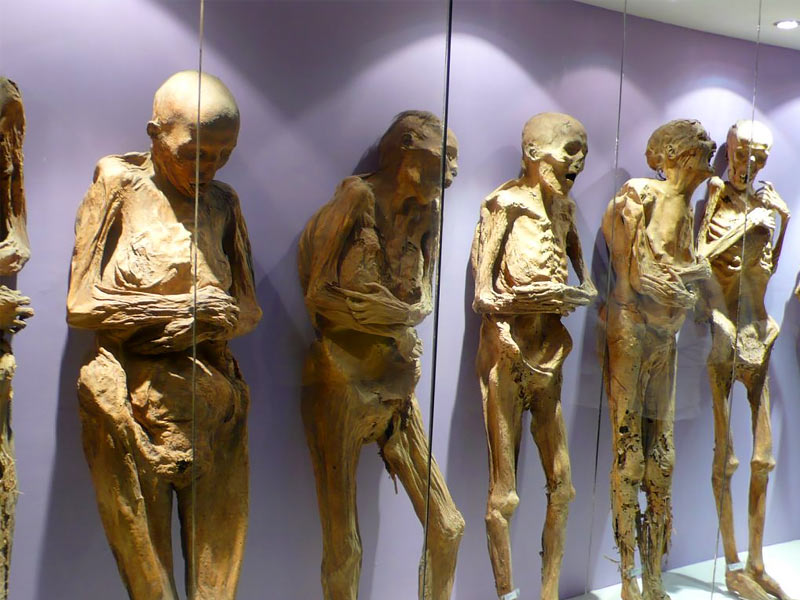
The Mummies Museum (Museo de las Momias de Guanajuato), which houses the naturally mummified remains of locals who died during a cholera outbreak in the mid-nineteenth century, was founded after the bodies date between 1865 and 1958 due to bural tax failure.
The curious were charged a small fee to see the mummies, and as word spread, it became something of a spectacle enjoyed by tourists from all over.
Going Underground: Exploring Guanajuato’s Tunnels
A highlight of a Guanajuato walking tour is exploring the city’s amazing network of subterranean streets and alleys.
The tunnels were built out of necessity to handle the often-flooded Guanajuato River (Rio Guanajuato), which once flowed beneath the city, but they became obsolete after a nearby dam was built to control the river upstream.
The extensive network of tunnels that remained were converted into roadways, relieving congestion on the streets above ground while also making them safer and more interesting for pedestrians.
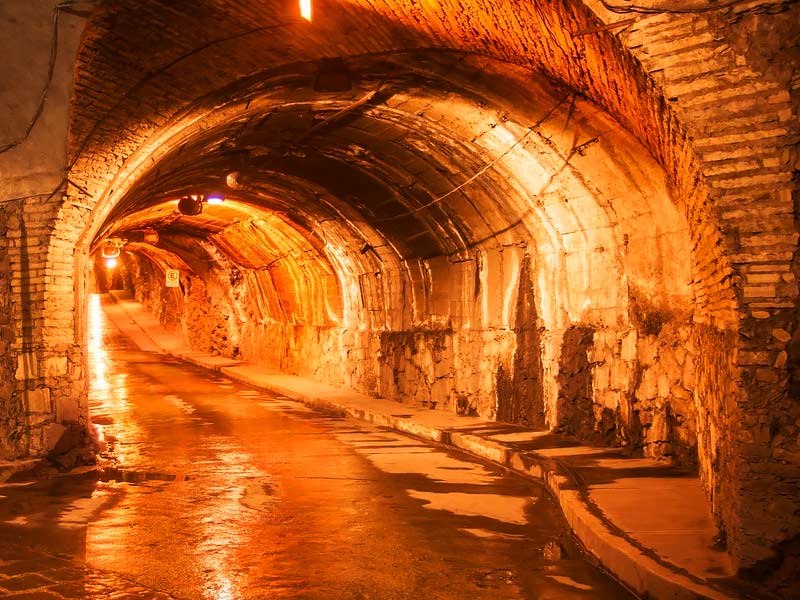
These cobblestone streets also accommodate pedestrians via a network of well-marked footpaths that are enjoyable to explore.
The tunnels, which are accessible from stone staircases located throughout the old city, are a must-see attraction and can also save time if you need to get from one place to another quickly (just make sure you have a map with you!).
Juárez Theater
The beautiful Juárez Theater (Teatro Juárez), Guanajuato’s opera house, dominates the Jardn de la Unión, the city’s pretty main square.
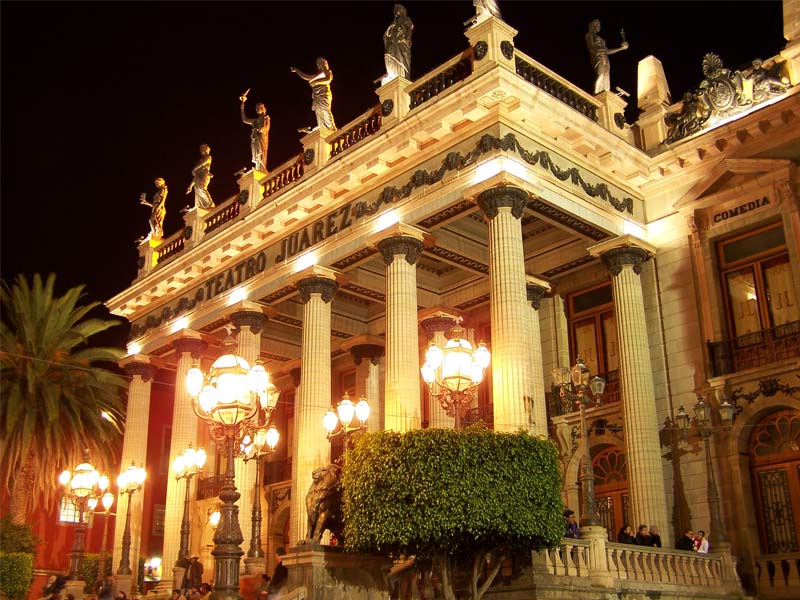
This magnificent neoclassical building, which opened in 1930 after some 30 years of construction, is notable for its massive Doric columns supporting a Romanesque portico adorned with nine bronze statues of the Greek muses, as well as the steps leading up to the building, a favourite meeting place for locals and tourists.
The Basilica of Our Lady of Guanajuato
The sandstone-colored Baroque Baslica Colegiata de Nuestro Seora de Guanajuato — the Basilica of Our Lady of Guanajuato — is well worth a visit in the picturesque Peace Square (Plaza de la Paz).
This attractive building, built in the 17th century and much altered since then, houses one of Mexico’s most important relics, the much-revered seventh-century statue of the Virgin of Guanajuato.

King Philip II of Spain presented this carved wooden figure on a silver base to the city in 1557.
Templo de Belén, built in 1773 and notable for its Churrigueresque façade, and Templo La Valenciana, notable for its three magnificent large altars, each richly decorated in gold leaf, are two other old churches worth visiting.
The Alhóndiga de Granaditas
The Alhóndiga de Granaditas, completed in 1809, is one of Guanajuato’s largest and most interesting historic secular buildings.
The structure now houses the Guanajuato Regional Museum, which has exhibits about the battle and the eventual execution of Hidalgo, whose head and those of his compatriots were placed atop the structure for all to see.
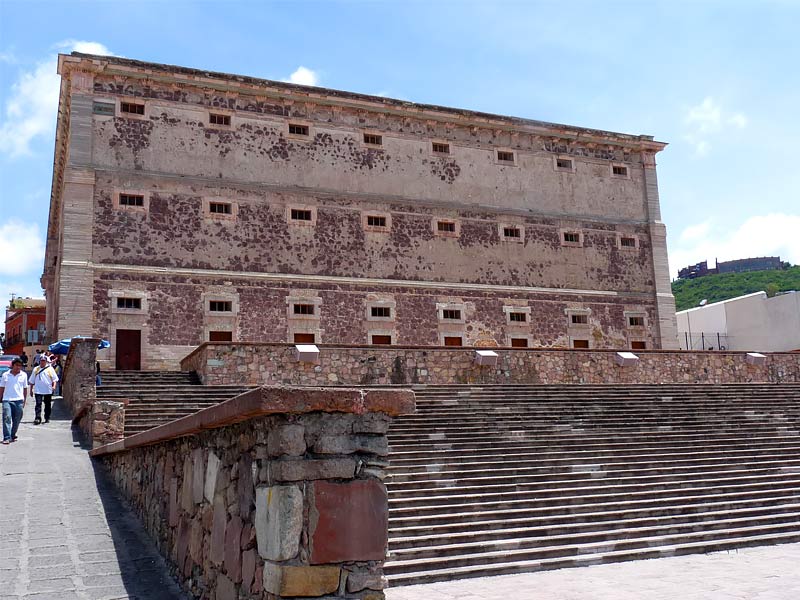
The museum has a large collection of Pre-Columbian materials in addition to displays of colonial-era artifacts.
La Valencia Mines
Guanajuato was once Mexico’s silver mining capital, responsible for 80 percent of the country’s silver production, and has a long history of mining.

These old mines, some of which date back to the mid-1600s, are now a UNESCO World Heritage Site and can be easily visited while staying in Guanajuato, as they are just a few minutes’ drive outside the city in the village of La Valenciana.
International Cervantino Festival
Already a popular tourist destination all year, the picturesque city of Guanajuato comes alive in the fall with the arrival of the annual International Cervantino Festival (Festival Internacional Cervantino).
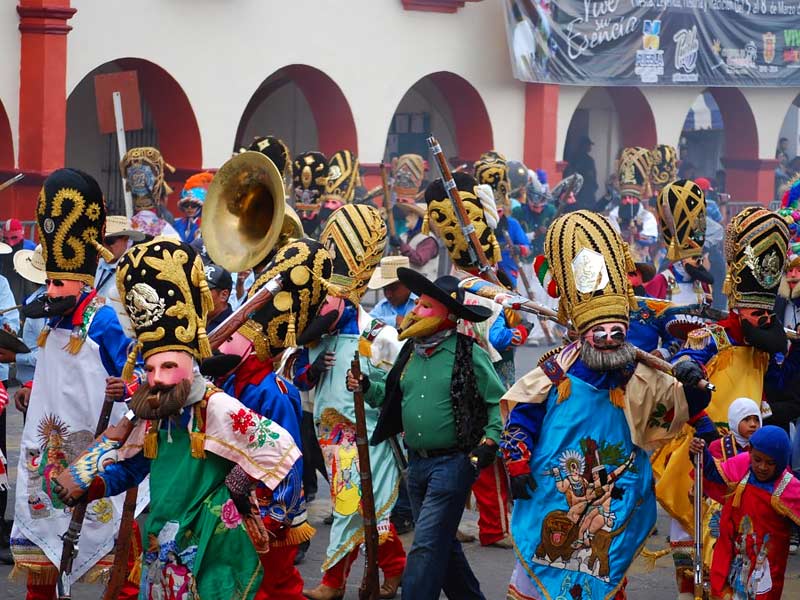
This October celebration of the works of Spanish writer Miguel de Cervantes Saavedra — famous for his epic work, Don Quixote — attracts over 200,000 visitors to see a variety of art, music, and theatre performances at spectacular venues such as Teatro Juárez, as well as some 50 other locations throughout the city.





























